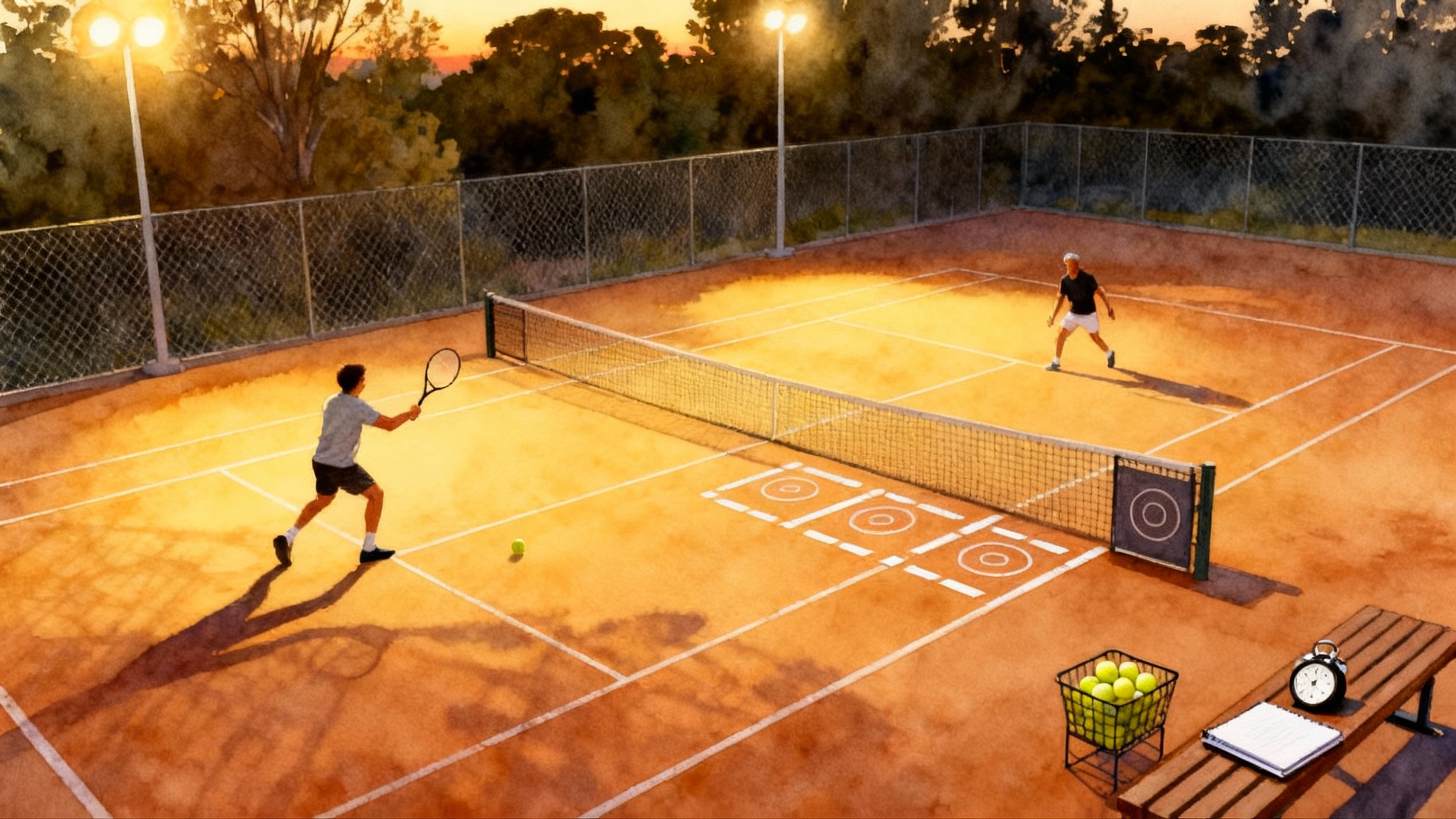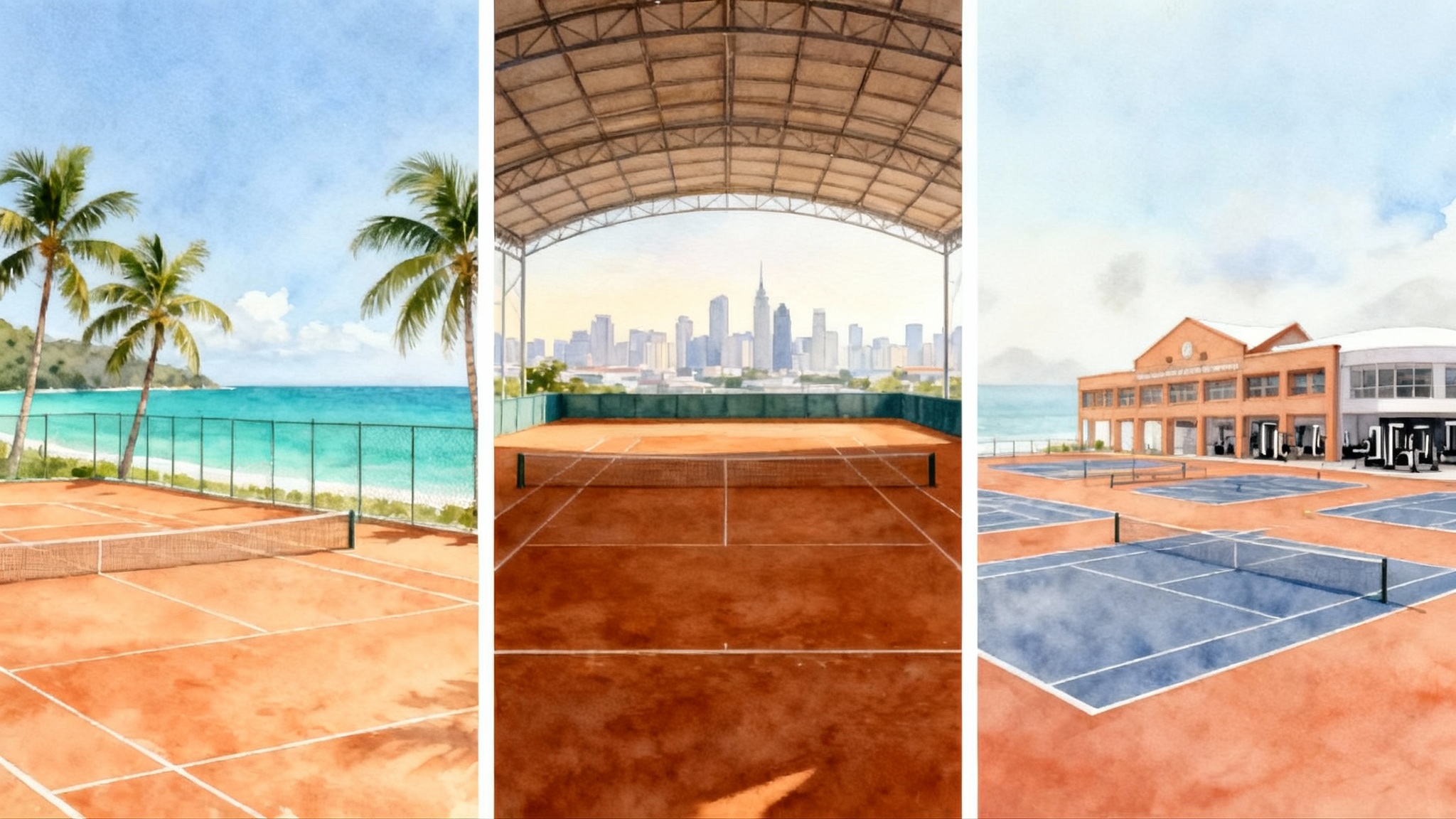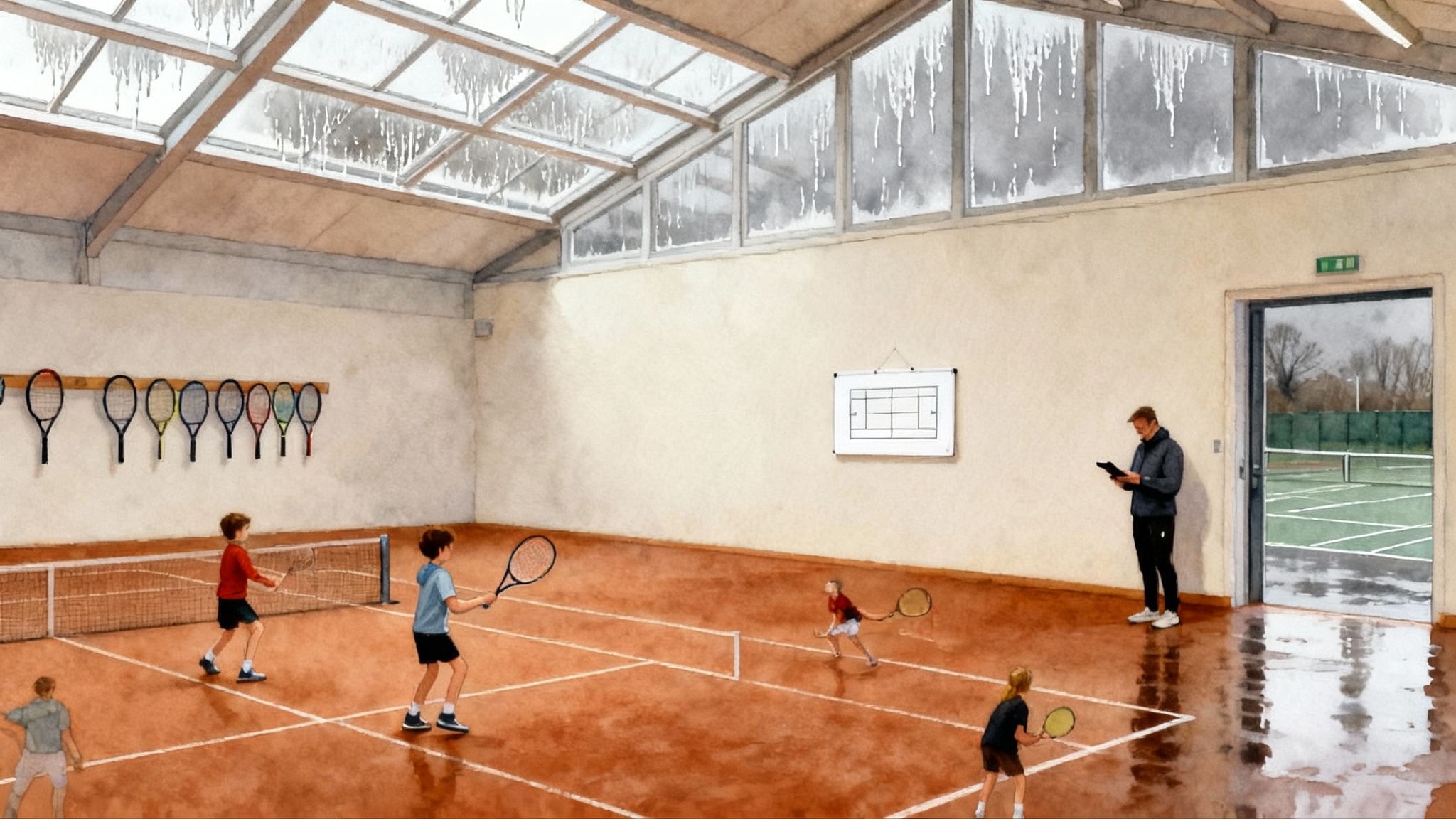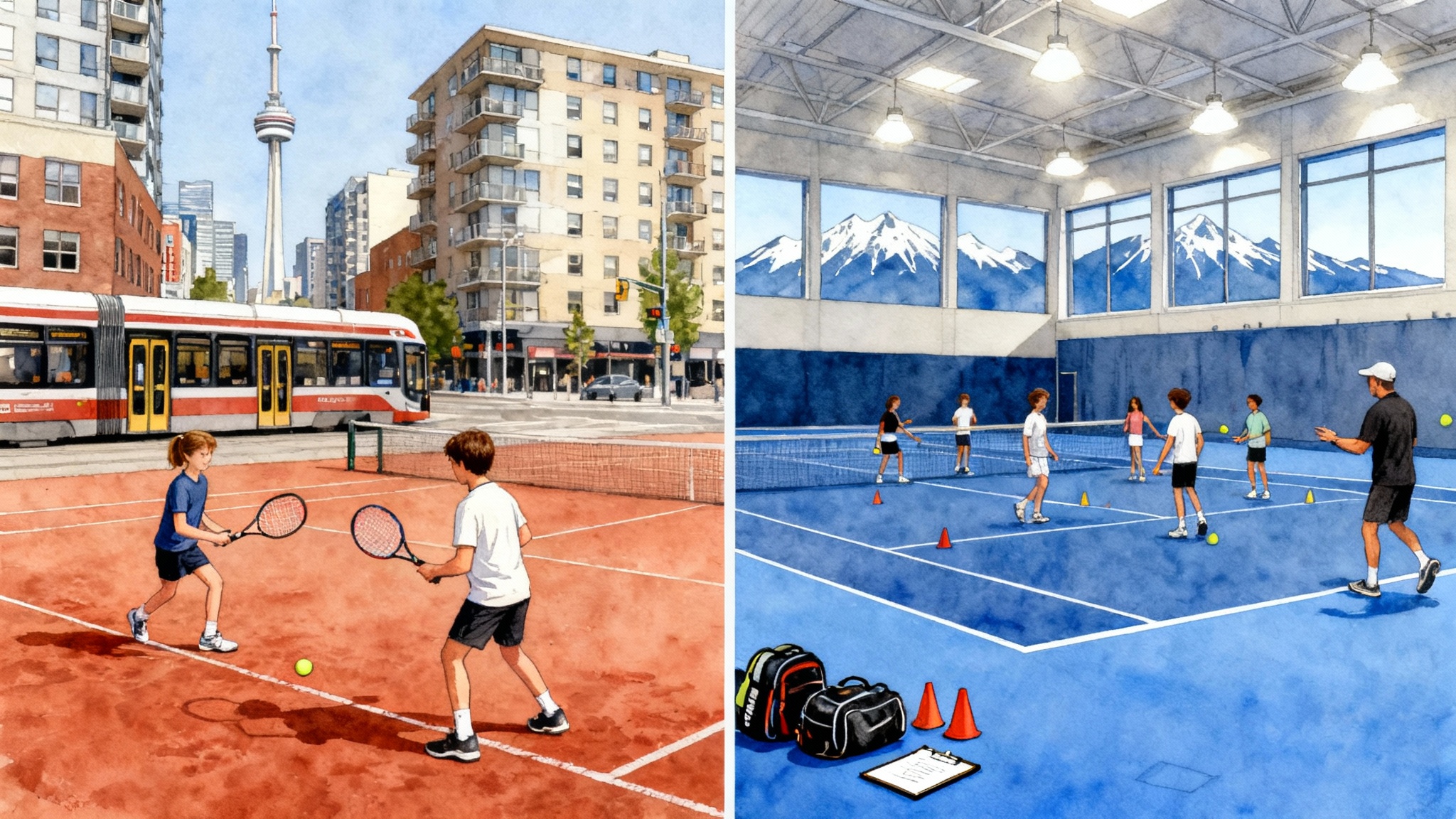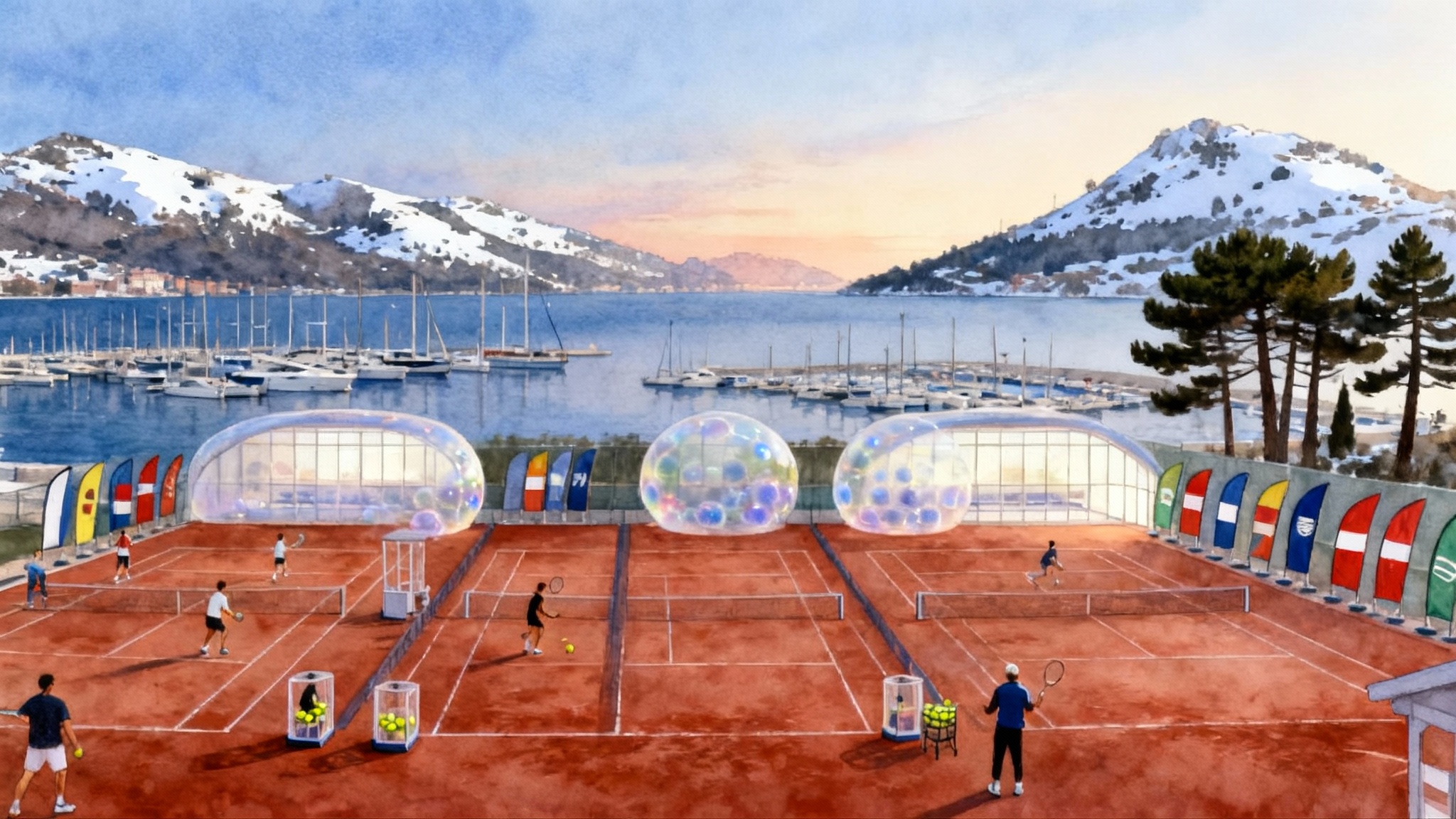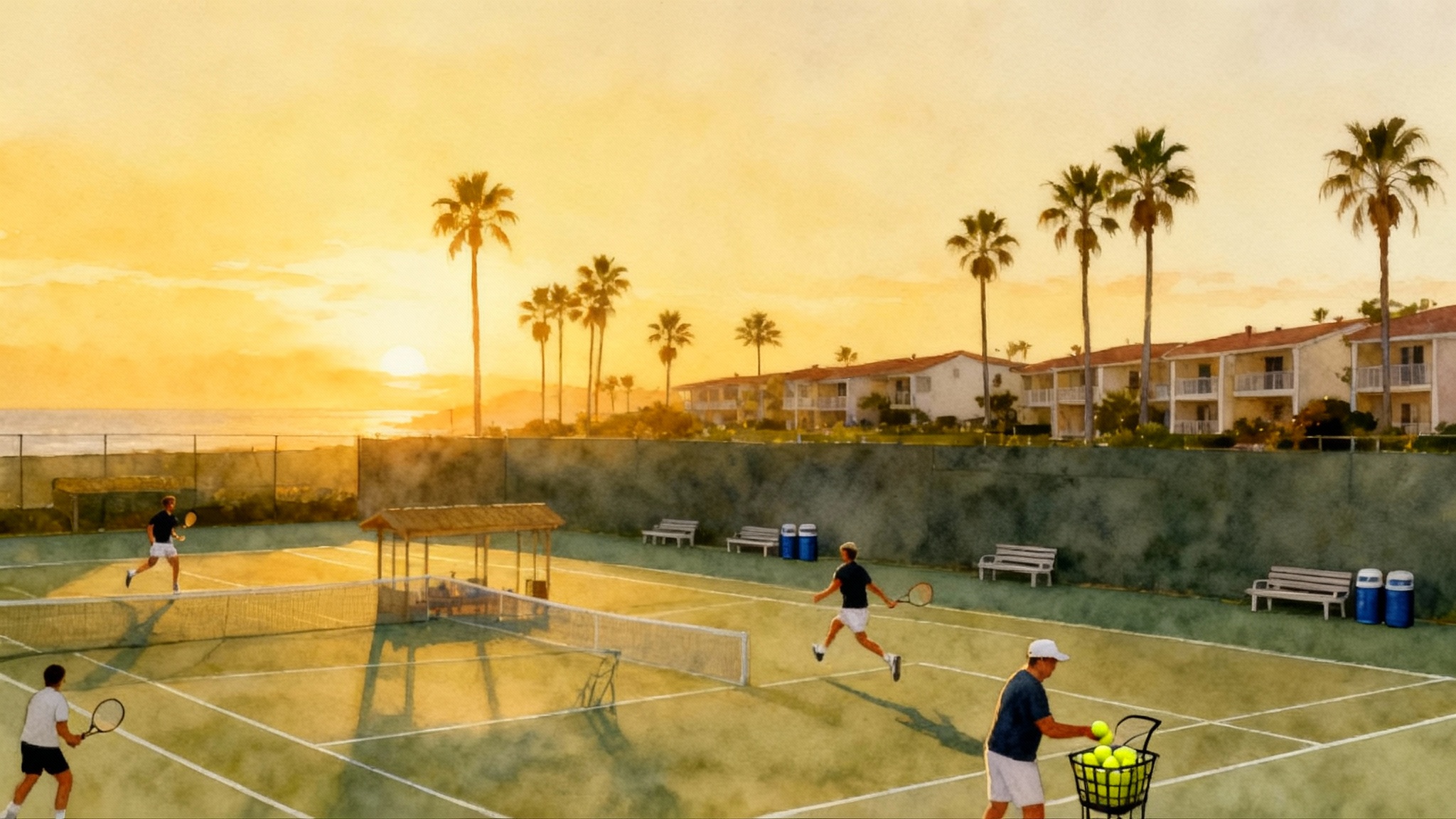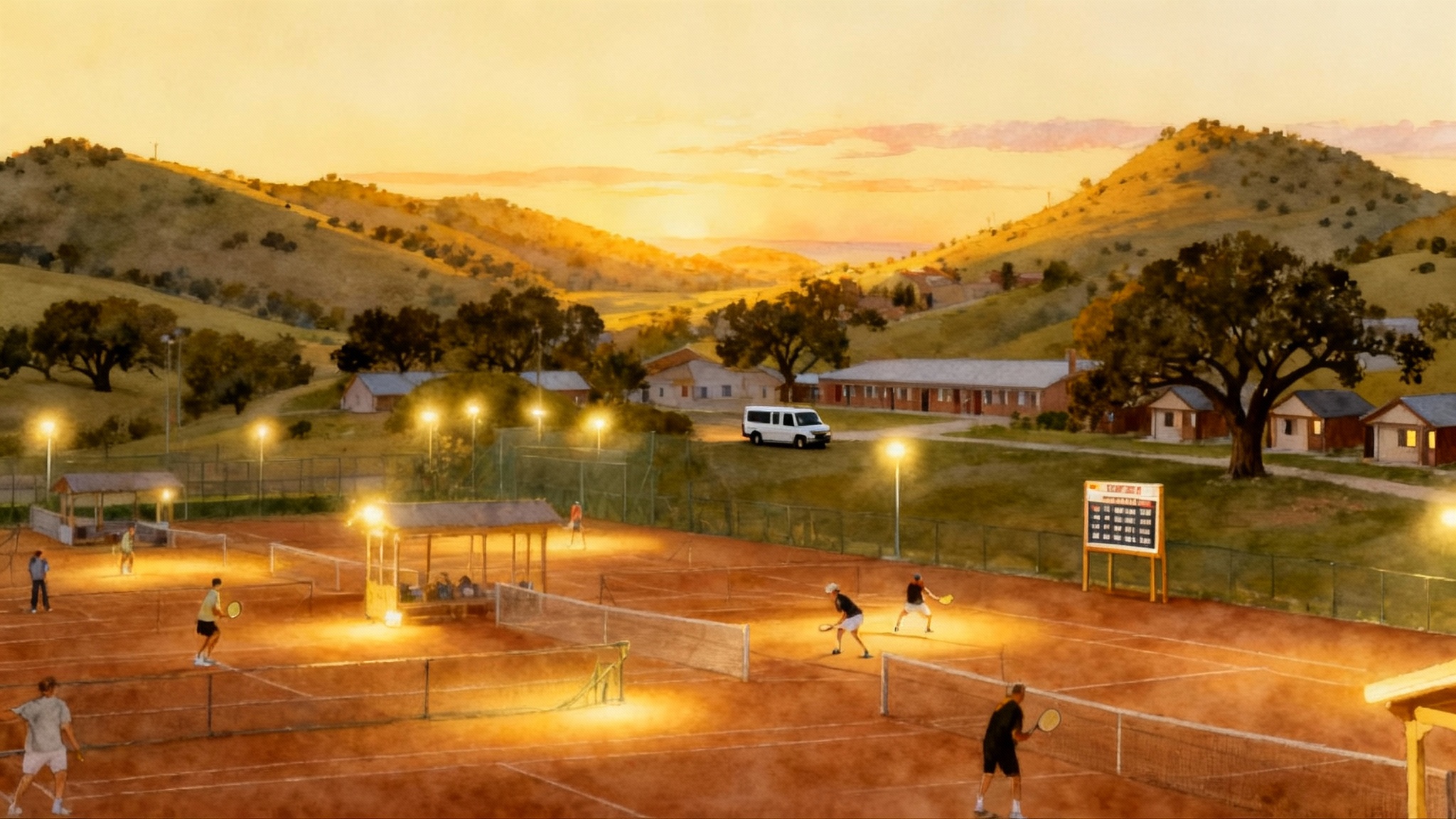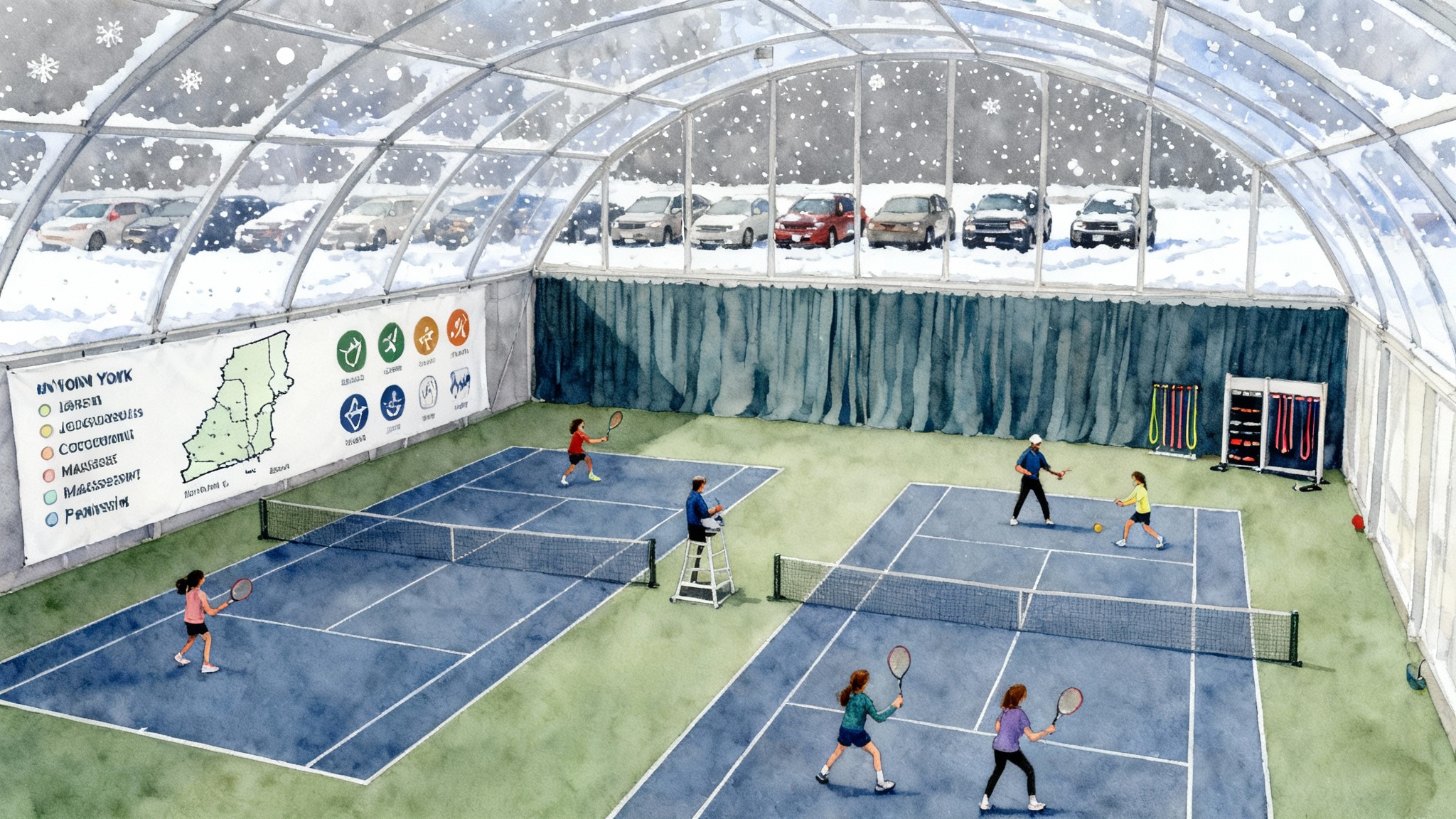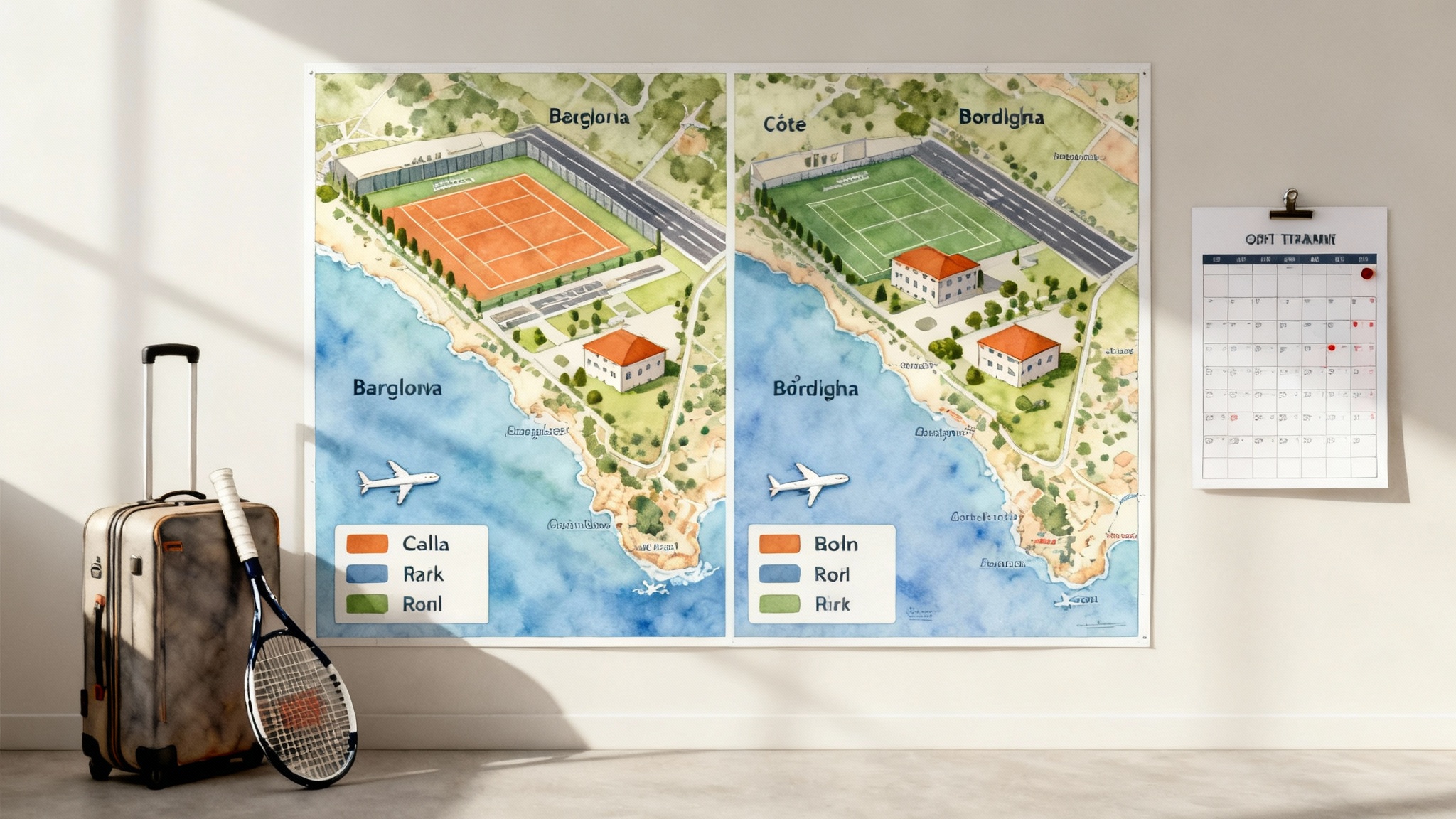Spain vs France: Nadal, MBA, Catalunya or All In, Mouratoglou?
A clear, head-to-head guide to Spain’s Rafa Nadal Academy, MBA Tennis Academy, and Catalunya Tennis Academy versus France’s All In Academy and Mouratoglou. We compare training, coaching ratios, academics, costs, tournaments, and placement for 2025–2026.
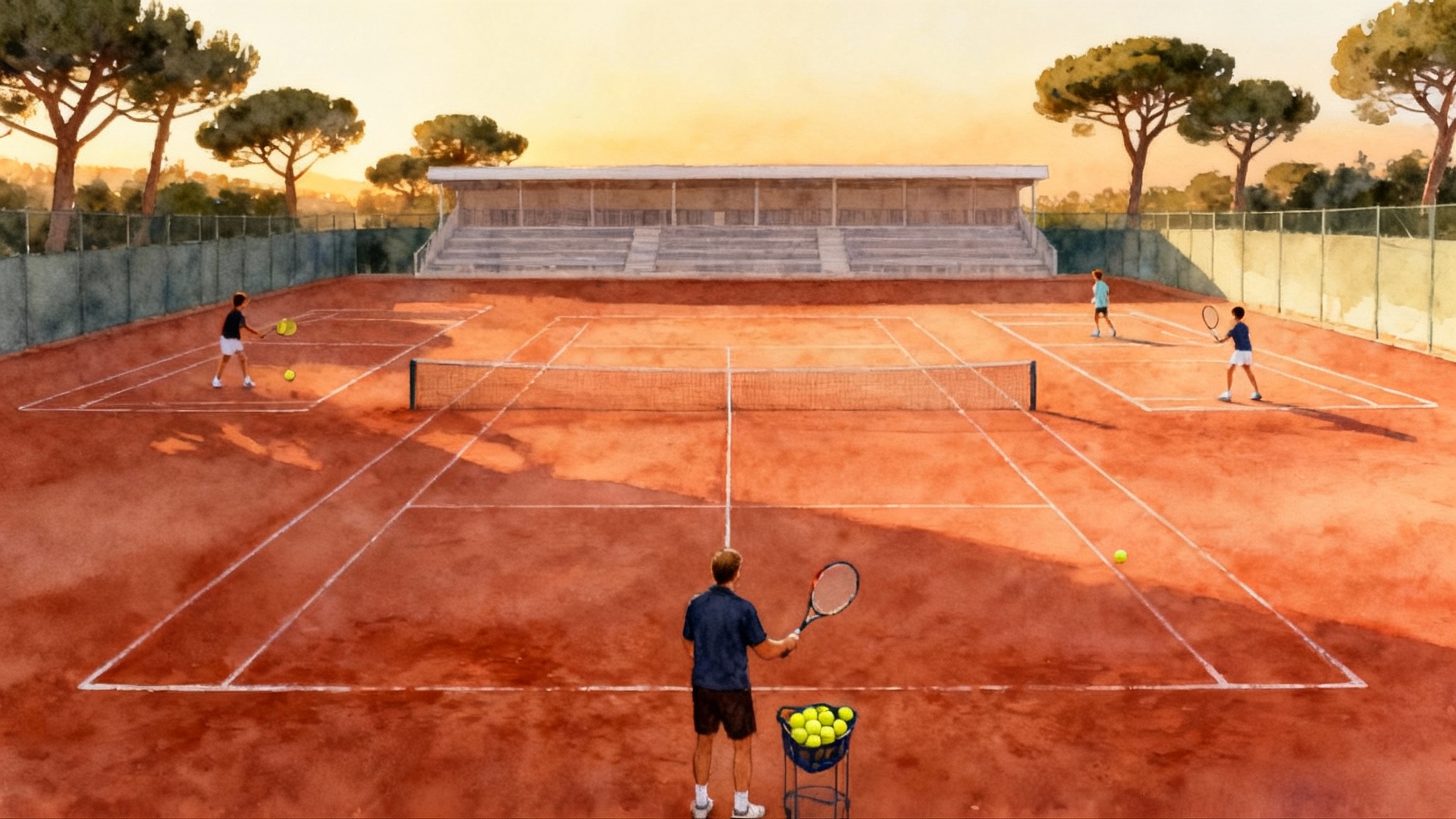
The decision in front of you
If your junior is ready for a European academy in 2025–2026, the short list usually comes down to two countries with very different tennis cultures: Spain and France. Both produce pros and scholarship athletes. Both offer year round training. Yet the daily feel of the work, the surface exposure, the school fit, and the price can be quite different.
This guide puts Spain’s Rafa Nadal Academy, MBA Tennis Academy profile, and Catalunya Tennis Academy profile head to head with France’s All In Academy overview and Mouratoglou Academy, so you can see which pathway matches your child’s needs.
Spain and France shape players in different ways
Think of Spain as the country of long rallies and patient construction. Training time leans heavily toward clay. Footwork highlights the adjustment steps that keep the body behind the ball for heavy topspin, with frequent recovery to the center using small, rhythmic steps.
France tends to mix clay and hard more evenly, with a greater emphasis on variety, first strike patterns, and all court options. Footwork work still lives on clay but looks more two way: load and explode into the court on attack days, then absorb and redirect from neutral positions on others.
Neither is better in the abstract. The question is which environment will actually accelerate your junior’s progress in the next 12 months.
Academy snapshots at a glance
Below is a quick, practical portrait of each program. Specifics can vary by age group and season, but these are the patterns families encounter most often.
Spain
-
Rafa Nadal Academy, Mallorca
- Surfaces and clay volume: 40+ courts split across clay and hard. Juniors often log more hours on hard than a traditional Spanish club, but still see substantial clay blocks for point construction and footwork reps. The campus hosts sanctioned International Tennis Federation competitions on site, which gives advanced players real match play without travel. See the academy’s page for the 2025 pro events calendar for context on how accessible those events are to residents and visitors, not as guaranteed entries but as on campus opportunities to watch and sometimes compete when qualified. ITF World Tennis Tour at the academy.
- Method emphasis: Ball heavy training, repetition at high intensity, live point play in tight progressions, and a simple tactical language around patterns like cross court solidity and forehand plus one.
- Coaching ratios: Camps and many group sessions target four players per court per coach; high performance blocks add one to one lessons weekly.
- Boarding and academics: On campus residence with a bilingual international school. Families like the single site convenience for training, physio, meals, and classes.
- Typical costs: Weekly camps often fall around two to three thousand euros with boarding. Full year tennis plus school is typically a high five figure investment; request a formal quote because pricing varies by grade, room type, and add ons.
- UTR and ITF access: Universal Tennis Rating matches run frequently in Spain and on campus; International Tennis Federation juniors and pro events take place in Manacor during the year. That mix can accelerate transition phases for qualified players.
- College or pro placements: The brand is strong with both European and U.S. coaches. Alumni have moved to ATP Challenger and Women’s World Tennis Tour events from this base.
-
MBA Tennis Academy, Cabrils, Barcelona area
- Surfaces and clay volume: Seven clay courts on site, with sea level conditions that suit long, quality hitting blocks. Expect a classic Spanish developmental arc: volume, structure, and patience.
- Method emphasis: Former professionals on staff blend clean technique work with competitive sets almost every day. The tone is boutique and personal rather than industrial.
- Coaching ratios: Small, steady groups with frequent two or four per court blocks for performance sessions. Private lessons are common before tournaments.
- Boarding and academics: The academy supports host family or residence solutions and partners for U.S. scholarship advising. Families often combine local international schools or online programs with training.
- Typical costs: Monthly training fees are lower than global mega campuses; the total annual spend depends mostly on your schooling choice and housing.
- UTR and ITF access: Barcelona’s calendar is dense with Universal Tennis Rating events and Spanish federation tournaments, with International Tennis Federation juniors reachable most months within Catalonia.
- College or pro placements: The staff actively supports U.S. college pathways and Spanish national ranking routes.
-
Catalunya Tennis Academy, Bellaterra, Barcelona area
- Surfaces and clay volume: Strong clay identity, with hard court days scheduled before fast indoor events or specific tournaments.
- Method emphasis: Footwork micro doses every session, heavy forehand development, and point construction goals that scale by level.
- Coaching ratios: Level based groups capped low during technical blocks; sparring is built in before weekend competition.
- Boarding and academics: Boarding offered via a Barcelona international boarding partner so athletes can combine school and daily training without long commutes.
- Typical costs: Short camps with or without accommodation are straightforward to price; the full year total varies with your academic plan and boarding option and is usually below the large campus brands.
- UTR and ITF access: Consistent access to Universal Tennis Rating events in Barcelona plus Spanish federation play, with International Tennis Federation junior tournaments in driving distance most months.
- College or pro placements: Suits families aiming for steady rating growth and regional tournament exposure, as well as those targeting U.S. college tennis after a European foundation.
France
-
All In Academy, Villeneuve Loubet and Lyon
- Surfaces and clay volume: The French Riviera site lists 12 outdoor clay and 5 outdoor hard courts, plus boarding on campus. Training typically cycles between clay first weeks and mixed surface weeks.
- Method emphasis: Two program levers stand out for families comparing to Spain: very tight coaching ratios in specific tracks (All In for Two or Four) and an explicit focus on match performance modules that cover mental routines and tactical testing.
- Coaching ratios: Options include two players per coach or four per coach. That is unusually tight for a European academy and makes it easier to correct patterns in real time.
- Boarding and academics: Tennis studies begins around age 12 with a schedule coordinated to training. The academy also promotes a U.S. scholarship placement service for college bound players.
- Typical costs: Published weekly camp prices start in the high hundreds to low thousands of euros depending on ratio and boarding. Annual tennis studies is quoted case by case.
- UTR and ITF access: The Riviera and Lyon regions have deep French Tennis Federation calendars, plus frequent Universal Tennis Rating activity. International Tennis Federation junior and pro events are reachable most months along the Mediterranean corridor.
- College or pro placements: The Tsonga led brand and the two per court option appeal to families who want fast technical change before showcases or selection weeks.
-
Mouratoglou Academy, Biot, French Riviera
- Surfaces and clay volume: More than thirty courts across clay and hard, with indoor options for poor weather. Training blends clay footwork days with assertive first strike pattern days on hard.
- Method emphasis: A scripted weekly load of tennis and fitness, plus individual lesson packages, video review, and a large, competitive peer pool.
- Coaching ratios: The academy states a maximum of four players per coach per court in core training, with one to one add ons. The scale of the campus makes it easier to find quality hits at the right level.
- Boarding and academics: A full campus experience with an on site international school track or a French track and a boarding village. The Tennis and School program publishes a typical weekly outline and a tournament calendar that includes Universal Tennis Rating matches and 12 to 15 International Tennis Federation events per year for qualified players. See the official program page for how the training and competition blocks are structured. Mouratoglou Tennis and School program.
- Typical costs: Recent brochures place core tennis programs, academics, and boarding in the low to mid forty thousand euros combined before options. Confirm current numbers because fees vary by room type and the amount of individual coaching you select.
- UTR and ITF access: The academy hosts major events on site and runs regular Universal Tennis Rating match weeks, which reduces travel and helps players build competitive rhythm.
- College or pro placements: The academy’s scale, name recognition, and established college advising are strong if you want many visible touchpoints for coaches and scouts.
Side by side: what actually changes day to day
Below is a concise comparison for the criteria families ask about most. Treat these as typical patterns rather than rigid rules, and ask each academy for a sample week for your child’s age and level.
| Criterion | Rafa Nadal Academy | MBA Tennis Academy | Catalunya Tennis Academy | All In Academy | Mouratoglou Academy |
|---|---|---|---|---|---|
| Clay volume in a normal month | Mixed, often 40 to 60 percent clay, with blocks tailored to event calendar | High, often 60 to 80 percent clay for development | High, with targeted hard court days before faster events | Mixed, cycles between clay first and mixed weeks | Mixed, balanced blocks on clay and hard with indoor options |
| Footwork patterns you will hear | Recovery steps to center, outside leg load, heavy forehand patterns | Spanish micro steps, balance first, depth before pace | Repeatable forehand base, inside out development, stability on defense | Attack neutral defense modules, court positioning cues, serve plus one | Pattern building by day, transition forward on advantage balls, return position work |
| Typical coaching ratios | Four per court in groups, private add ons | Small groups, frequent two or four per court | Small groups, capped by level | Two or four per court options | Maximum four per court in groups, private add ons |
| Boarding and academics | On campus residence and international school | Host family or residence plus school partnerships, including online | Boarding via international school partner near training | On site campus boarding with tennis studies from age ~12 | Full on site boarding and international or French school tracks |
| Annual costs (indicative) | High five figures with school and boarding; weekly camps around low to mid two thousands | Lower monthly training; total depends on school and housing | Generally below mega campus totals; depends on school choice | Weekly camps from high hundreds to low thousands; annual tennis studies by quote | Roughly low to mid forty thousand euros combined for core tennis, academics, and boarding before options |
| UTR and ITF access | On site International Tennis Federation events and frequent Universal Tennis Rating matches | Dense Barcelona calendar for Universal Tennis Rating and Spanish federation play; ITF juniors within the region | Universal Tennis Rating and Spanish federation events locally; ITF juniors within driving range | Strong regional French Tennis Federation schedule, plus Universal Tennis Rating activity; ITF events accessible along the Riviera | On site event hosting and scheduled Universal Tennis Rating matches; regular International Tennis Federation calendar integration |
| College or pro track | Alumni on Challenger and Women’s World Tennis Tour; support for U.S. college recruiting | Active U.S. scholarship advising; Spanish ranking route | College friendly with steady rating gains and competition exposure | U.S. scholarship placement service is a product focus | Established U.S. college advising and visibility, with large alumni footprint |
UTR stands for Universal Tennis Rating, a global match rating used by college coaches and event organizers. ITF stands for International Tennis Federation, which sanctions junior and professional tournaments worldwide. Access in the table refers to how easily an academy can get your child into verified matches or sanctioned events when your junior meets entry criteria.
How to match the pathway to your junior
-
The 11 to 13 year old clay builder
- Choose a training block that locks in clean footwork habits and rally tolerance. Spain’s MBA or Catalunya often wins here because of the steady clay diet and the quieter, boutique environment that allows many touches on the ball without rushing progress.
- What to ask: How many cross court forehand and backhand progression minutes per day? How often are pattern games scored to teach decision making rather than pure drilling?
-
The 14 to 16 year old momentum chaser targeting rating jumps
- You need controlled chaos: live points against many styles, plus a coach who will intervene the moment the wrong pattern appears. All In’s two per court option or Mouratoglou’s four per court with structured individual hours create that pressure and feedback loop quickly.
- What to ask: How many filmed sessions per month and who reviews them with my child? How many Universal Tennis Rating matches can you schedule in a four week block without overplaying?
-
The 16 to 18 year old with U.S. college in sight
- You need verified results, steady academics, and a clean highlight reel. Nadal Academy’s on site events and Spain’s deep rating ecosystem make scheduling efficient. Mouratoglou’s formal tournament calendar and college advising can be a shortcut to coach visibility.
- What to ask: Which tournaments will count most for my target conferences, and how will we balance training to peak for those weeks?
-
The late specializing multi sport athlete
- Look for a school first setup with flexible training loads. Catalunya’s boarding with a nearby international school and MBA’s family style environment suit athletes who still need academic rhythm while ramping tennis.
- What to ask: Can we start at four days per week and scale to six as we approach competitive blocks? How will you periodize strength work to respect growth spurts?
-
The budget sensitive family that still wants European immersion
- Consider Barcelona area programs where you can pair a quality international or online school with residential or host family housing. Add one or two high impact weeks at a big campus like Nadal or Mouratoglou before showcases or trials to pressure test skills.
- What to ask: How can we combine small group training for most of the year with a targeted private lesson burst before key tournaments?
A concrete decision checklist
-
Map the next 24 weeks. Put targeted Universal Tennis Rating matches and International Tennis Federation events on a calendar, then fit training blocks around them rather than the other way around.
-
Demand a sample week. Ask for a real Monday through Saturday schedule that shows minutes on clay versus hard, the ratio of live points to drills, and planned recovery.
-
Verify coaching ratios by session type. Some programs are four per court for technical work but drop to two per court for tactical sets. Make sure the tight ratios line up with your child’s biggest needs.
-
Test the boarding and school day. Ask for wake up, transit time, study hall supervision, and lights out. A great tennis day can be wasted if the academic routine is chaotic.
-
Price the total year, not just tuition. Add up training, academics, boarding or host family, meals, laundry, airport transfers, private lessons, physio, and tournament travel.
-
Ask for real tournament scaffolding. For example, Nadal Academy families can plan around on site pro and junior events. Mouratoglou publishes a competition cadence for Tennis and School athletes. That scaffolding is worth as much as any single lesson because it reduces friction and guesswork.
-
Insist on feedback artifacts. Video clips, scouting notes, a written pattern focus for the next two weeks. If it is not written down, it is hard to repeat.
Two example roadmaps you can copy
-
Spain first pathway for a 14 year old building weapons
- September to October: Barcelona base at MBA or Catalunya, four clay days and two hard days weekly, with Saturday UTR matches. Two private lessons per week on serve plus first forehand.
- Late October: One week at Nadal Academy to rehearse on hard under pressure and get an internal camp tournament.
- November to December: Alternate two local Spanish federation events and one rest week per month. Track forehand quality by measured targets, not just feel.
- January: If ranking permits, plan a local International Tennis Federation junior event in Catalonia, with a tune up week of lower ratio sessions beforehand.
-
France first pathway for a 16 year old chasing college interest
- September: Selection week or trial block at Mouratoglou. Lock a four per court group and schedule one private lesson weekly.
- October to November: All In for Two block to tighten backhand return and first strike patterns. Enter Universal Tennis Rating match weeks and one French Tennis Federation event per month.
- December to February: Mouratoglou Tennis and School cadence with filmed sessions every two weeks and a targeted run of International Tennis Federation juniors. Build a short reel from verified match play.
- March: Evaluate offers and test academic fit by shadowing classes for two days at your likely final choice.
Avoiding common mistakes
- Choosing by celebrity rather than fit. A famous name can help, but the right ratio, surface mix, and calendar will move the needle faster.
- Ignoring recovery. Ask how often deload days appear and what they look like. Quality trumps sheer hours.
- Overloading travel. One of Europe’s advantages is density. Use on site or nearby events to cut logistics and save energy for match days.
Bottom line
If your junior thrives on clay rhythm and patient construction, a Barcelona area base at MBA or Catalunya Tennis Academy, spiked with a hard court rehearsal week at Nadal Academy, is a powerful cocktail. If your junior needs rapid pattern change and visibility, All In’s two per court format and Mouratoglou’s competition scaffolding can compress learning time. The right pathway is the one whose daily training, school setup, costs, and tournament calendar line up with the next step in your child’s game, not the brand on the gate.
Choose based on the week your junior will actually live. The right week, repeated, is what creates the breakthrough.
